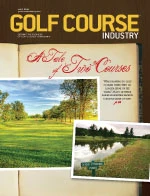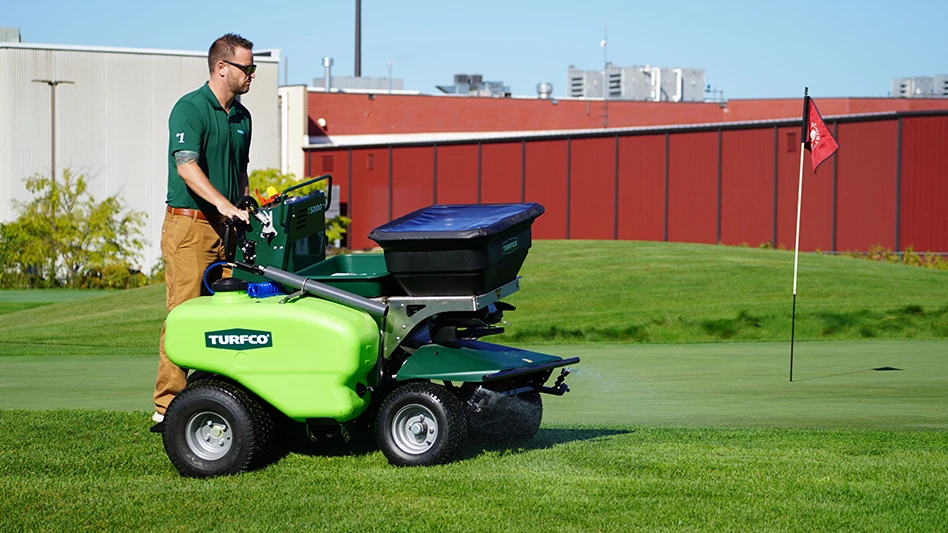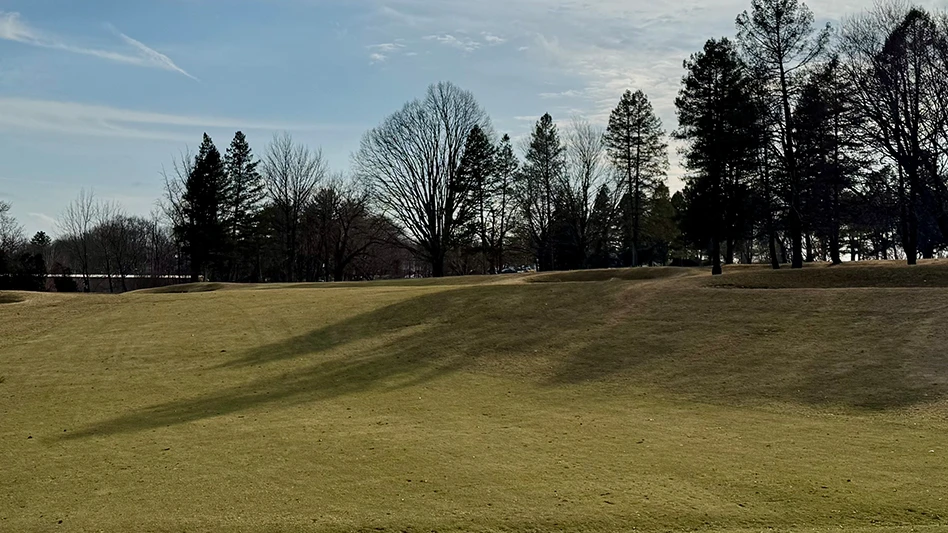Editor's Note: A Tale of Two Courses
The times have not been particularly kind to the golf course industry.
Whether a casualty of excessive development or a result of the recent economic downturn, you don’t have to drive very far before you happen upon a fallow course, its fairways and greens overgrown and its once lily-white bunkers breeding grounds for weeds.
But this dire outcome doesn’t always have to be the end result. While investigating what happens to failed golf courses when they no longer serve up tee times we were surprised to learn that many of these abandoned properties receive a second lease on life. And contrary to popular belief, many aren’t destined to become the foundations for new housing developments, but rather they’re resurrected as viable golf courses and continue to serve their communities as parks and nature preserves.
If you know of other examples, please forward them to us at gci@gie.net. We’d like to share them with you in upcoming issues of the magazine and online.
Mike Zawacki, editor
A Community Asset
Unable to meet the demands of running a nine-hole course, the Grant family, with their local government, converted their facility into a community park.
By John Torsiello
For 14 years, Veronica Valley Golf Course in Leelanau, Mich., was a fairway of dreams for William and Diane Grant and their extended family.
Dedicated to William Grant’s late grandmother, Veronica Schaub-Peplinski, a woman who liked to make dreams come true, the course – a true mom-and-pop operation – opened in 1991 and for nearly a decade and a half delighted visitors with its challenge and whimsy.
“We purchased the property with help from grandma and grew strawberries on it for several seasons,” Diane Grant says. “When the bottom dropped out of the market we started to wonder what else we could do with the land. We looked into creating a campground, but there were already two popular campgrounds in the area. One day, one of the guys from the conservation service told us the property would make a beautiful golf course. A couple of hours later Bill was out in the field and a guy went by with golf clubs in the back of his car. That was another hint and we thought, ‘let’s build a golf course.’”
Which the couple began to do with some trepidation in 1989, first clearing the land, and then seeding the course in 1990 and opening the nine-hole, 3,203-yard par-35 layout in the spring of 1991.
Diane Grant admits she and her husband didn’t know what a tee was when they set out to create their course. “Really, we had no clue what we were doing. Nobody in the family was a golfer, but we worked hard and got lots of help from neighbors, friends and family members,” she says.
She recalls her children driving four-wheel off-road vehicles with old bed springs attached to the rear to level dirt to create fairways and greens, and neighbors donating trees to plant on the property.
“We worked from five in the morning to dark in-season taking care of the course and running the business,” she says. “Our kids would work there eight hours a day. We could never really turn enough rounds to justify hiring a professional for the pro shop and lessons.”
But the public responded and the course was hopping April through October. A few celebrities vacationing in the area – located close to Lake Michigan in the upper northwest corner of the lower peninsula of the state – dropped by after hearing of the eclectic and scenic course run by a friendly couple.
“We made it a family golf course,” Diane says. “Each year we would put new things out on the course. We had a 100-foot steel bridge going over a creek, covered bridges, carved wooden statues, Snow White and the Seven Dwarves characters, a bear that roared at you when you came around a corner, and Rapunzel’s castle. Some people didn’t like it because they felt it distracted them. But most enjoyed what we did and the kids loved it.”
In 2002, William was diagnosed with Parkinson’s Disease and the couple had decisions to make. William could no longer keep up with the dawn-to-dark, 24-7 demands of caring for a golf course. The couple’s children had grown up and did not express a desire to follow in their parent’s footsteps, although they did spend plenty of time helping manage the layout during its decade-plus of operation.
The Grants reviewed their options during the next two years, getting several offers from developers, although none seemed interested in maintaining the 93-acre parcel as a golf course.
“I think people saw how hard we worked and what we went through to keep the course open and weren’t interested in that lifestyle,” says Diane Grant. “Some of the people we talked to wanted to change the land to something other than a place where people could come to enjoy themselves, which had always been the intent of buying the land and then managing it.”
What occurred next was sweet happenstance, she says.
“We saw a story in the paper about a family that had sold land to create soccer fields and we thought that might be a way to go,” she says. “We said to ourselves, ‘What if we made the golf course into a park and our kids, grand kids and others could come and enjoy the land. We approached the county (Leelanau) about perhaps selling the course to them for passive recreational use and they got the ball rolling. Turning it into a park was in keeping with grandma’s initial desires for the land.”
Greg Julian, a Leelanau County parks and recreation commissioner, says the offer by the Grants to sell the land to the county was serendipitous.
“We were looking for land to create a park in the eastern part of the county where the golf course was located. We looked at several pieces of land, but the Grants’ parcel was ideal for our purposes. There was a little back and forth and we applied for a grant to help buy the property.”
The former golf course, located in Bingham Township, about a 20-minute drive from Traverse City, was eventually sold in 2008 for around $800,000, with the county obtaining a $525,000 grant from the Michigan Natural Resources Trust Fund to assist in the purchase. The Grant family stipulated in the purchase agreement that the land must be used for recreational purposes – hiking, picnicking, fishing and hunting and other such pursuits. Local civic organizations, including the Traverse City Rotary, contributed funds toward the purchase.
About one third of the former course consists of wetlands, while the remainder is mostly open meadows with some wooded areas. A trout stream runs through the property. Because of the pathways and roads that were built for the golf course, the land is quite accessible and somewhat easy to maintain, county officials say.
The county received advice on how best to proceed with the purchase of the land, and resulting establishment of the park, from the Leelanau Nature Conservancy, Julian says.
“They do land purchases for a living and we aren’t experts in the field. We did use them as a resource and their input was helpful throughout the process,” he says.
The park’s upkeep and future development will be paid with county funds, and the property is managed under the auspices of the Leelanau County Parks and Recreation Department. The department has a maintenance staff that mans Veronica Valley and two other parks, Julian says.
Hunting and fishing at the park (the property’s ponds are stocked with fish and a popular children’s fishing derby is held each year) comes under the direction of the Michigan Department of Natural Resources.
“There are several benefits to adding this area to the county’s park/open space inventory,” says Leelanau County Administrator, Eric Cline. “It provides a new passive, natural area that is open to the public and a permanent protection from development of this site, which hosts a fairly diverse natural environment. It also provides a County-owned public facility in the east-central portion of the County, as opposed to the other two County-owned parks that are oriented closer to the southwest portion of the County. The park also provides more of a ‘natural area’ focus, as opposed to our other parks, which are more active recreation and ‘neighborhood’ parks-oriented.”
There are no plans to expand activities or facilities at the park. A trailer that served as a pro shop, a deck, and some of the statues and farm-oriented folk art were removed because of potential liability issues.
The benefits to the county are to preserve a central piece of property for public use and to develop a year-round park for a variety of pastimes – fishing, skiing, bird watching, hiking, says Mary Tonneberger, chairman of the Leelanau County Board of Commissioners. “As a former user of the golf course, I can attest to the fact that this piece of property will be well used by residents and visitors of all ages.”
While the metamorphosis of the golf course into a park was received favorably by most residents, the transition wasn’t met with universal acclaim. “People loved coming to play golf at the course and we got to know so many of them through the years,” Grant says. “We had five leagues that played here and golfers got to know our whole family. We couldn’t wait to open up for the season each spring. People didn’t want to see the course close.”
Grant and her husband, who now operate a stump-removal business, wax nostalgic over their former golf course. “Bill was very particular about maintaining the course and we made so many friends during the 14 years we ran it,” she says. “One daughter got married there and a son had his reception at the course. It was a special time in our lives. Our kids learned hard work and how to deal with people. Bill sneaks down there on his power cart once in awhile and the kids go fishing in the ponds. It’s nice to see people there and enjoying the land.”
Grandma Schaub-Peplinski would be happy to see her property still bringing smiles to young and old alike.
Out of Limbo
A new ownership group resurrected the abandoned Rat River Golf Club by transforming fallow land into Maplewood Golf Club.
By David McPherson
You think the rough at your course is long, try hitting it out of two-foot high weeds. Or, better yet, try to sink a three-footer through these bothersome grasses. Had you wandered upon Maplewood Golf Club, just south of Winnipeg, Manitoba, a couple of years ago, that’s what you would have encountered. The course was better suited for sheep to graze than for golfers to play. Now, thanks to a new ownership group, the once abandoned course has been resurrected, renamed, and is back to provide those in this rural community a good walk not spoiled.
New owner Michael Guertin took over in 2008. He immediately addressed the river issues. All the protective dikes around the river were raised and repaired and incorporated more into the game. The bridges were also restored. Eventually the plan is to seed the dikes with some wild grasses to give them a more uniform and inclusive look on the course. Three holes were rerouted on the back nine and five greens were completely renovated. Hole No. 11 over the river is now a 300 par 4 from the tips instead of the previous 470 yard monster down a narrow fairway. Several tee decks were also added on each hole, including a few tees on top of the dikes.
Guertin then hired a small crew to come in and start cutting back the grass to get it back into playing shape. Luke Wiebe, who had worked with Guertin in Winnipeg as a salesman for John Deere, was hired as the golf operations manager. With a limited advertising budget, he says one of the biggest struggles has been letting people know the course is reopened.
“We’ve struggled a little bit to get the old customers back, letting them know that we are open and also getting new customers,” Wiebe says. “In Winnipeg, Manitoba, everyone wants deals. We are a price-driven province, so that makes it difficult.”
A round at Maplewood costs $35, and that even includes a cart. “We are the best value in Manitoba,” jokes Wiebe.
After the initial work in 2008, Superintendent Mike Greenwood was hired in 2009 to finish the job and get the course open in decent playing shape. Greenwood, who has been a greenkeeper for 14 years, came to Maplewood from Della Hunt Golf and Country Club a small private club 90 minutes outside Winnipeg.
“When I arrived, there had been no maintenance, absolutely nothing,” says Greenwood. “The greens, tees… everything had been neglected. In 2008, the owner hired a small crew of four to five guys to come in before I came. They came in with large equipment and brush cutters and knocked everything down to four or five inches – that’s how far gone it was. Literally, there were common burdocks and two-foot tall weeds on the greens and tees. It looked more like abandoned pasture land than a golf course.”
Greenwood and his crew worked quickly to finish off the course renovation in early 2009, so the front nine was opened in mid June. The superintendent says that they basically had to start from scratch.
“All the greens had to be reworked and overseeded,” he says. “We were able to salvage some of the turf that was there on a few greens, but the majority were resurfaced and reseeded.”
Checking his calculator, Greenwood estimates they overseeded approximately 100,000 square feet of green space throughout 2009. The greens were overseeded with an aggressive pro bentgrass while all the fairways were seeded with a variety of bluegrass. Maplewood also did an overhaul of its irrigation system.
Mother Nature sure didn’t cooperate in 2009. Winnipeggers suffered through a record-setting eight consecutive months of cooler-than-normal temperatures. Following a brutally cold winter, it was a soggy spring with a flood that was the second-worst in the past 100 years.
“We had major difficulties last season from the weather with tons of rain,” Greenwood says. “It was a terrible year to try to grow in a golf course, which didn’t help at all. Some of the greens and fairways – even though we are now completely open – are still only six months old.”
Thankfully, after a kinder Mother Nature in the fall of 2009 and spring of 2010, midway through this season, all 18 holes are now open, customers are coming out more, and the course is in decent shape. The goal is to get the greens in top-notch shape as soon as possible. “All things considered, I’m relatively happy with the conditioning of the course,” adds Greenwood.
Regarding the dikes, there is always ongoing maintenance – patching up weak areas here or there, but most of the flooding problems have been addressed. “The last two years had they not been addressed we would never have been opened,” Greenwood says. “If the repair work had not been done, we would be flooding right now. We are happy with how all the dike work has held up and hopefully it continues to do so.”
The biggest challenge was to initially get the course back to playable conditions. “Getting everything knocked down to playable height and being able to manage all the weeds was initially the hardest part of getting this course re-established,” he explains. “You can imagine the amount of weed seeds that were packed in the soil after being let go for two years. It’s been a bit of a struggle to clean it up, keep it clean with the amount of debris that was left lying around and trying to re-establish normal cultural practices that had not been done for years.”
Surprisingly there was little disease to battle. Getting the course back to playing shape from a pasture to pristine greens is an ongoing process, but Greenwood is pleased with the progress. There is work to do on the fairways, he says, but most locals are happy to have an 18-hole course back.
“It’s been a learning experience for sure,” Greenwood concludes. “I came from a 9-hole course in rural Manitoba and moved here not fully expecting the condition of what the course was in. I’ve learned a lot on my own … it’s difficult to pinpoint any exact situation. When you enter something completely different, every day is different… there are different problems – whether it’s an irrigation problem or Mother Nature – you have to take them as they come and hope for the best.”

Explore the July 2010 Issue
Check out more from this issue and find your next story to read.
Latest from Golf Course Industry
- Atlanta Athletic Club approves funding for master plan
- Maximizing Cultural Practices and Agronomic Benefits with Minimal Surface Disruption
- Real Answers about Spray Nozzle Choices
- From the Course to the Factory: How Customer Insights Drive Innovation
- New & Proven Enzyme Strategies for Sprayable Thatch Management
- Innovating Tomorrow: Wittek’s New Products & Industry Staples
- PBI-Gordon introduces new field development team
- The Cabot Collection announces move into course management






